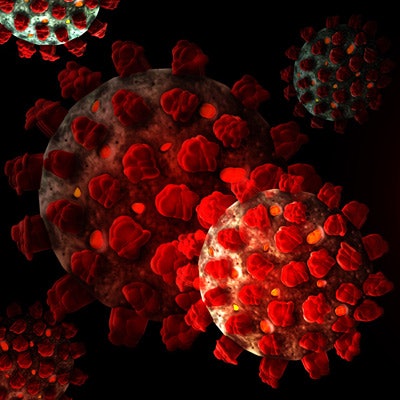
Amid the novel coronavirus pandemic, radiologists have a key role to play in helping their hospitals respond to the crisis -- from infection control to offering staff support, according to Dr. Carolyn Meltzer of Emory University in Atlanta and Dr. Mahmud Mossa-Basha of the University of Washington in Seattle.
In a recent article published in Radiology, Meltzer, Mossa-Basha, and colleagues weighed in on best practices for coping with COVID-19. AuntMinnie.com spoke to the two radiologists about how radiology is stepping up to cope with the crisis and how their peers can best protect themselves, their departments, and their patients.
AuntMinnie.com: How are radiologists helping their hospitals deal with the novel coronavirus pandemic?
Meltzer: It's "all hands on deck" as the team comes together to do what's needed. We're trying to regularly rotate out our radiologist workforce as much as possible to ensure we have adequate staffing should providers and patient-facing staff become ill with the virus.
Mossa-Basha: So far, our radiologists have not necessarily been called into action to directly evaluate and interact with patients outside of the procedure environment, but we are in a pool of faculty to be called onto the front lines if further surges happen. Our emergency department leadership has informed us that with the reduction in outpatient volumes, physicians with reduced volumes are likely the first to get called into action.
What is the role of imaging in this pandemic?
Meltzer: We are all learning about the appearance of COVID-19 pneumonia on chest radiographs and CT. While there are highly suggestive CT findings, they are not pathognomonic. Chest CT and portable chest radiography can be helpful tools in assessing suspected COVID-19 infection -- particularly where PCR-RT [reverse transcription polymerase chain reaction] testing is not available -- but typically are not recommended for first-line diagnostic purposes.
Mossa-Basha: Radiology does and will continue to play a central role in pandemics/epidemics and disaster preparedness. Radiology is central within the healthcare diagnostic and delivery environments. Radiology departments need to be prepared for patient surges and increased volumes, with large influxes of patients to the ED that will require diagnostic and interventional procedures.
How are radiologists working together with technologists and nurses to control the spread of infection?
Meltzer: Radiologists, technologists, and nurses are working side by side to develop standard operating procedures for infection control. This virus does not seem to be particularly difficult to destroy, so it is becoming clearer that a long "terminal" clean for scanners isn't needed following imaging a patient with suspected or known COVID-19. A three-minute disinfecting wipe down between patients seems to be sufficient.
Mossa-Basha: Technologists are the front line in terms of exposure and potentially transmitting disease. We have trained our technologists in the donning and doffing of personal protective equipment, as well as procedures for contact precaution. We've also created workflows for symptomatic patients that may require imaging. Communication between the clinical units -- specifically intensive care and emergency -- and radiology technologists is critical to ensure appropriate protections for patients and staff.
What does the advent of viruses like SARS-CoV-2 mean for radiology?
Mossa-Basha: Similar to the rest of the world, radiology wants to focus on protecting the people within their scope, including patients, faculty, staff, and nonhealthcare worker employees. Radiology wants to continue clinical operations and patient care while ensuring containment of those that have been exposed.
We have rescheduled all elective invasive procedures and rescheduled certain outpatient imaging studies, including screening mammograms, [dual-energy x-ray absorptiometry] scans, and lung cancer screening. With the reduction of volumes across the board, significant revenue reduction will be a reality, which may cripple many practices. There will be a major impact on radiology and hospital-wide revenues.
How has radiology made a difference in managing COVID-19 in the hospital?
Mossa-Basha: While imaging screening is not part of the routine diagnostic algorithm for COVID-19, there have been instances of patients presenting with atypical symptoms, including abdominal pain or severe chest pain, where imaging has helped determine diagnosis. In these cases, where COVID-19 is not on the radar and the patient would not have otherwise undergone PCR testing, radiology may be able to catch some of these cases.
How are you seeing staff step up in the midst of the crisis?
Meltzer: Our radiologists who have less clinical work to do -- such as breast imaging residents and trainees -- have offered to help however is needed. And our residents have volunteered to contact and help reschedule elective imaging appointments.





















